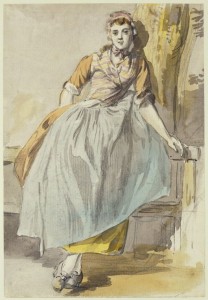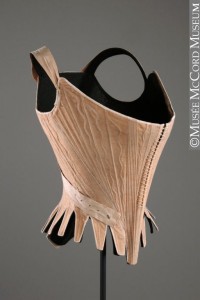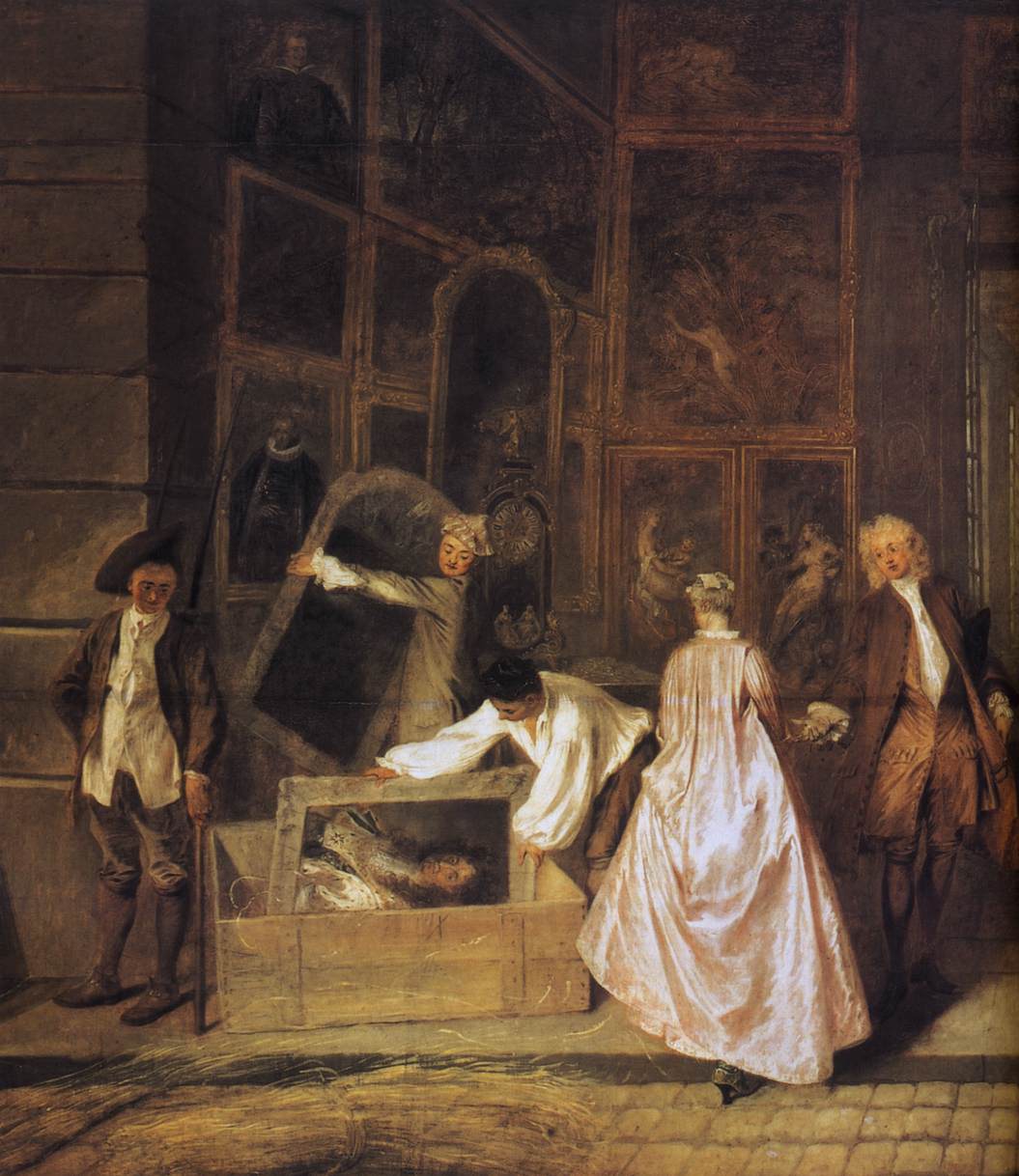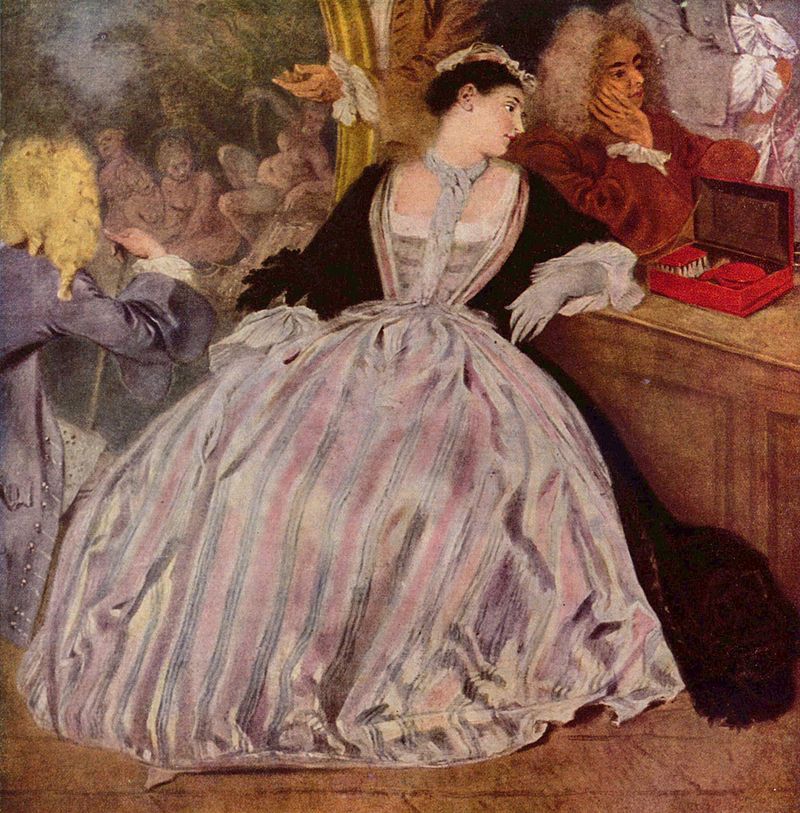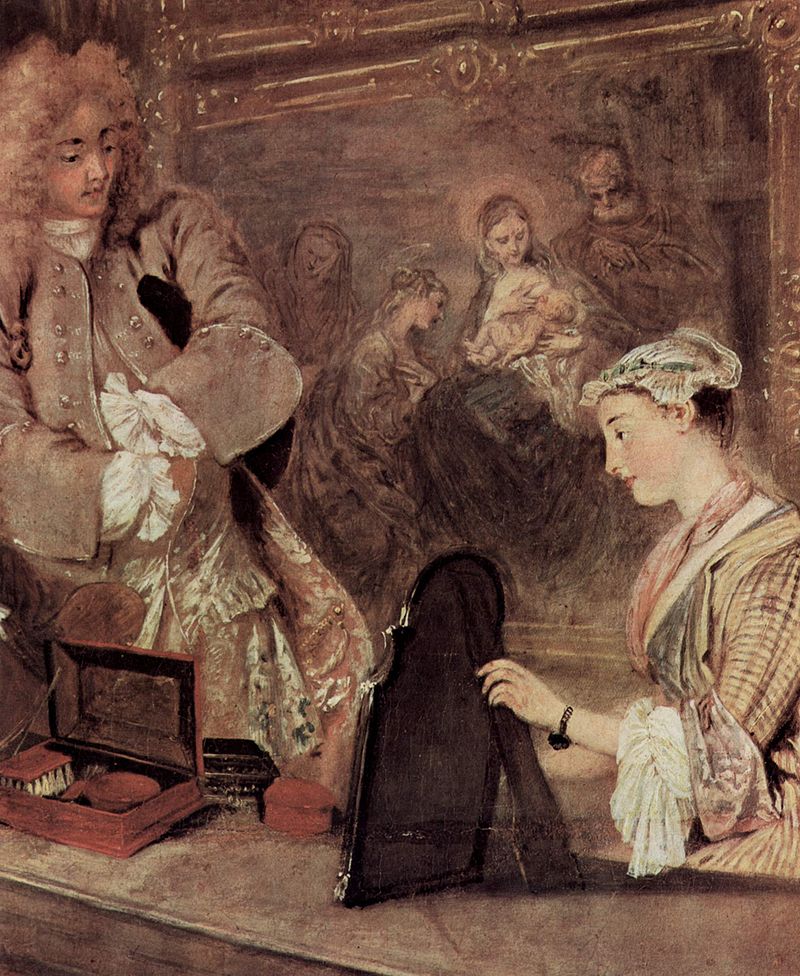The Neck Cloth
We thought we'd have a page designated to the various ways in which Neck Cloths (oh that ambiguous term) could be worn. All of these methods have been taken direct from the paintings, portraits and etchings that fill our research. We've also created a page trying to plot when these Methods of wearing the Neck Cloth filtered in and out of fashion - we do say 'Try'!
8 General Techniques:
Having studied the images we think we've pinned it down to being worn in 8 different ways.
- The Tucked Method:
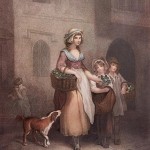
- Wheatley - 1793
Use your imagination and you will probably get there faster than we can type - but essentially the ends of the Handkerchief (Cunningtons) gets tucked into the neck line of the dress and you don't see them again. The rest can then get flumped up and draped nicely or flattened depending on the year. This cloths main fashion years was in the late 18th c - somewhere between 1780 and 1790 when the dresses were CF meeting which made this an obvious choice but it was also worn fairly faithfully before that.
- Through The Lacing Method:
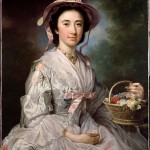
- c.1750 - Knapton
Probably the most used technique in the whole century - the method behind this was simply draping the folded or single layer Neck Cloth over the shoulders, as with the above style, but instead of just shoving the ends into the dress, they get delicately (or clumsily!) pulled through under the central lacing if the dress has it, or Echelle Ribbons, underneath the 'Buckle for the Stays' or ties that the dress has. It's interesting to see in the paintings that generally (and we say 'generally' with held breath) that if the dress has a plain stomacher with nothing connecting the two Robings then the 'Tucked In' method was used while if it had something connecting the two Robings then this method was used. Which is why we have said 'probably the most used' as this form of dress was one of the longer lasting designs for the 18th c.
The Crossed Over Method:

- Romney - 1791
Only sporadically seen in the paintings, this may well be because it was a bit more a working woman's way of wearing her neck cloth - it's hard to tell. But the ends are pulled across the bust and tied at the back creating a cross over effect. This Method however, really comes into it's own in the 80s and 90s when the gowns no longer have a central stomacher but meet at the CF. This Cross effect was obviously a fashionable style as it can be found in Dress form, in the neck cloth form and in Stay form - suddenly becoming a feature on the Stays with cross over straps that hooked or tied at the front. Even the Zone dress is a kind of nod towards this Cross-Over shape and was obviously pleasing to the fashionable eye.
The Loose Method:
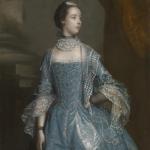
- Reynolds - 1756
We tend to think of this way of wearing a neck cloth as being much more Victorian but it does seem to crop up every now and then in 18th century art. Literally as it's described the neck cloth is draped over the shoulders in the usual manner and then the ends are just left to dangle freely. If this method turns up in a working class sketch it's hard to tell if it's worn like this because it has come loose but it's seen in enough distinct ways to earn it's own class. Again, this could be worn for most decades in the 18thc but had it's high point of fashion in the 50's to 60's when the fashion for super sheer cloths came in and this method allowed them to be seen to their greatest effect and also no longer hid the dress so much due to their see-through nature. This method was also worn with the black neck cloths of the 60s.
The Tied Method:

- c.1755 - Rotari
Again, not hard to imagine really but the Neck cloth is looped over itself in a half knot manner, like you would a lazy cravat - just draped over and left to hang loose. It could also be slightly tucked in or also, treated to the full 'Through the Lacing Method'. This isn't a style appears to have massively took off in Britain but it can be seen enough to warrant it's entry.
- The Shoulder Method:
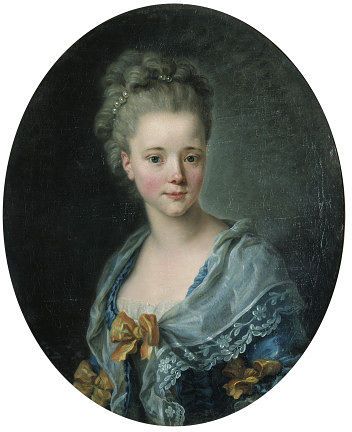
- No details - c.1770
Treated like a shawl this method's techniques of wearing were to be draped and pulled around the shoulders and then seemingly held by something at the CF so that the ends then more shortly drape and fall down the Centre of the Stomacher or CF of the gown. Along with the Loose Method, this technique was popular during the 50s with their sheer cloths, the 60s with the black cloths and also spreading out into the 70s and 80s.
- The Twist Method:
Not normally seen in British fashion except with
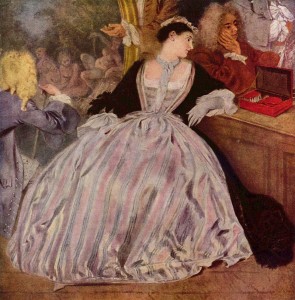
Furbelows or Lace, we've included this Method just because it did exist and there's no reason why it couldnt've been worn in fashionable wear but going unrecorded in the paintings. It seemed to be primarily a French Fashion - especially when the item being twisted was a neck cloth - but as France was where our fashions flowing in from at this time there's no reason to assume no ladies wore it as such. We have no record of neck cloths being worn in this way within British paintings.
Similar to the Tied Method, the Neck Cloth got twisted into a constant spiral falling down the CF of the gown. The habit of wearing Furbellow/Lace/Chenille in the Twist Method seems mainly to concentrate in the years 20s-30s and then 70s and 80s. in the latter decades it seemed to blend well with the mass amounts of crazy trim that could adorn the Court Wear for these years.
And Finally....
- The Pinned Method:
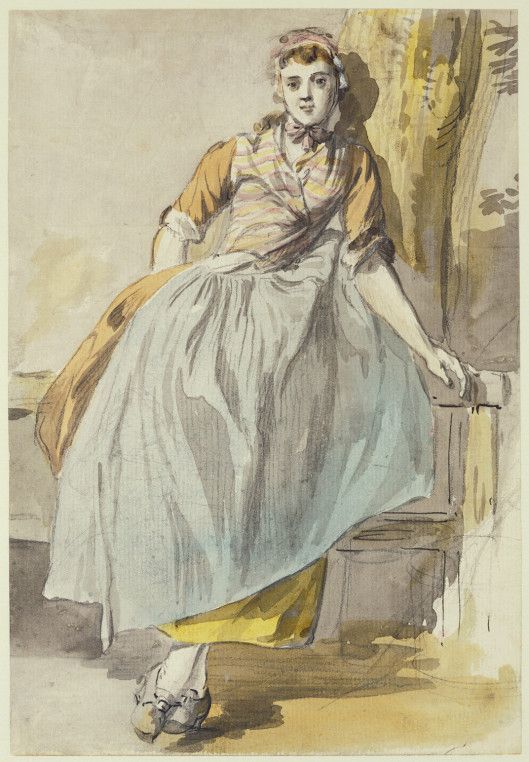
This is a bit of a mixed bag Method as it tends to house some of the images that don't quite come into any of the other categories because of the way they are held onto the body - they can surely only be pinned. We don't have many of these images but those that we've squirreled out we hope you can see the difference between this Method and the others.
We've also written a piece about the progress of fashion this garment has through the 18th century so if you would like to read more then please click here:
The Neck Cloth!

